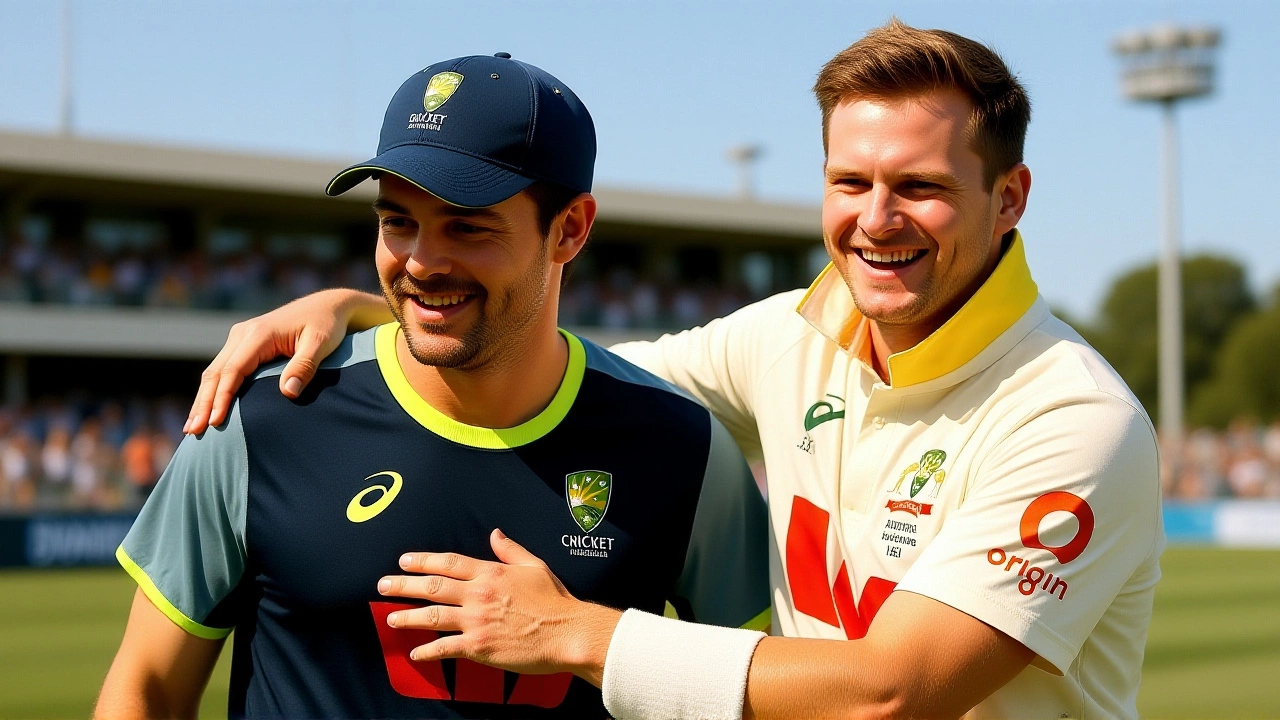On November 22, 2025, the Perth Test turned on a dime — not with a thunderclap, but with the crack of a bat. Travis Head, the 31-year-old Australian left-hander, delivered an innings so audacious, so precise, so utterly devastating that it flipped the 2025 Ashes series on its head. England, who’d begun the day in complete control after dismissing Australia for 187 on Day 1, lost nine wickets for just 98 runs in a single session. By tea, the W.A.C.A. Ground in Perth was buzzing with disbelief. By stumps, Australia had seized total command.
The Turnaround That Defied Logic
Just 24 hours earlier, England’s bowlers had torn through Australia’s lineup like paper. Joe Root had looked serene at the crease. Jonny Bairstow had carved boundaries with ease. The England and Wales Cricket Board (ECB) was already drafting press releases about momentum. Then Head walked out. And everything changed.
He didn’t just bat. He dismantled. In 87 balls, he raced to his century — the fastest by an Australian in a day-night Ashes Test. He didn’t rely on brute force; he used angles, footwork, and timing that made England’s pace attack look slow and predictable. Mitchell Starc, who’d taken five wickets on Day 1, returned to claim five more on Day 2, finishing with a match haul of 10 for 117. But it was Head’s innings that silenced the critics.
Why This Innings Feels Historic
Michael Vaughan, ex-England captain and now BBC Sport analyst, put it bluntly: "I think it’s one of the greatest Test innings I’ve seen in the Ashes." He pointed out the absurd contrast: "Just 24 hours prior to when Travis had walked out, England were bullying these Australian batters." That’s the kind of swing that doesn’t just win matches — it rewrites narratives.
Bharat Sundaresan, cricket writer and longtime observer, noted the philosophical divide: "Head batted sensibly but aggressively. England batted... recklessly." The English top order, particularly right-handers like Root and Bairstow, seemed frozen by the pink ball’s erratic behavior on the W.A.C.A.’s famously fast pitch. They chased wide deliveries. They played across the line. They forgot the most basic rule of Perth: don’t play for the ball to swing — play for the ball to bounce.
The pink ball, used in day-night Tests, behaves differently than the red one — it swings more early, then deteriorates faster. Perth’s pitch, known since 1970 for its searing pace and uneven bounce, turned it into a minefield. England’s preparation, scrutinized in the BBC analysis, appeared inadequate. "The way he set up Joe Root in the first innings," said Alex Hartley, former England bowler, "was textbook. But they didn’t adjust. They kept doing the same thing. And got punished."
Starc, the Silent Assassin
While Head stole the headlines, Mitchell Starc worked like a surgeon. His left-arm angle, combined with the ball’s seam position on the W.A.C.A. surface, made him unplayable. He didn’t bowl bouncers to intimidate — he bowled them to induce mistakes. One delivery to Ollie Pope, a 148kph ripper that reared off the pitch and took the top edge, was the moment England’s hopes began to unravel. Starc’s 10-wicket match haul was his first in Tests since 2019 and the first by an Australian in a day-night Ashes match.

Head vs. Warner: The Selection Debate Ignites
Head’s performance has reignited one of Australia’s most persistent selection debates: should he replace David Warner? Warner, 37, has been a cornerstone of Australia’s Test lineup since 2009. But his recent form — three ducks in his last five innings — has raised eyebrows. Head, meanwhile, has now scored four centuries in his last seven Tests. "He’s not just filling a slot," said Sundaresan. "He’s redefining it."
What This Means for the Rest of the Ashes
England now face a mountain. They trail by 212 runs with just one wicket left in their second innings. Even if they survive Day 3, Australia will hold the upper hand heading into the fourth Test in Adelaide — a venue where they’ve won 11 of their last 12 Tests. The psychological blow is deeper than the scoreboard. For the first time since 2019, England look out of their depth on Australian soil.
The Ashes, a series born from a 1882 satirical obituary declaring English cricket dead, has always been about pride. But this time, it’s also about survival. With two Tests remaining — in Melbourne and Sydney — England must not just win, but rediscover their identity. Can they adapt? Can they recover? Or has Travis Head’s genius written their epitaph in the red dust of Perth?

Why Perth Is the Ultimate Cricket Crucible
The W.A.C.A. Ground isn’t just a venue. It’s a test of nerve. Its pitch, prepared with a mix of red soil and clay, cracks under pressure. The ball comes off the deck at shoulder height. Batsmen need to be agile, not just skilled. Bowlers need to be ruthless. In 2021, Australia won here by an innings. In 2013, Steve Smith scored 141 in a single day. Now, Head has added his name to the list.
And the irony? England had won the toss, elected to bat first, and thought they’d set the tone. Instead, they became the story — not of dominance, but of collapse.
Frequently Asked Questions
How does Travis Head’s century compare to other great Ashes innings?
Head’s 100 in 87 balls is the fastest century by an Australian in a day-night Ashes Test. It ranks alongside Michael Clarke’s 160 in 2013 and Steve Waugh’s 157* in 1997 for sheer impact. But unlike those innings, Head came in when his team was under siege — and turned a 98-run deficit into a 212-run lead. Few Ashes innings have flipped momentum so completely in such a short span.
Why did England’s batting collapse so dramatically?
England’s top order lacked adaptability to the W.A.C.A.’s pace and the pink ball’s behavior. They chased wide deliveries, played across the line, and failed to respect the bounce. Their strategy, focused on attacking spin in the first innings, left them vulnerable to Starc’s pace. The collapse wasn’t just poor technique — it was a failure to read the conditions.
What role did the pink ball play in the match?
The pink ball swung more in the air during the first 15 overs, then deteriorated faster than a red ball, offering more seam movement off the pitch. England’s batsmen, used to red-ball conditions, misread its trajectory. Australian players, who train extensively with pink balls in day-night Tests, adapted quicker. Head himself said after the match: "It’s not about power — it’s about patience with the pink ball. You let it come to you."
Is Travis Head now Australia’s first-choice opener?
With David Warner’s form dipping — three ducks in five innings — and Head’s consistency rising (four centuries in seven Tests), the selectors are under pressure. Head has now scored 587 runs in his last six Ashes innings. While Warner remains a legend, Head’s combination of aggression, discipline, and adaptability makes him the logical choice for the future. His performance in Perth may have sealed the decision.
What’s England’s path back into the series?
England must win the next Test in Adelaide to stay alive. They’ll need Root to rediscover his form, Bairstow to anchor the innings, and their pace attack to contain Head and Pat Cummins. But mentally, they’re reeling. The last time England won a Test in Australia after losing the first by an innings was 2010. The odds are stacked. Their next chance isn’t just about cricket — it’s about belief.
How significant is this result for the overall Ashes series?
Australia now leads 2-0 in the five-Test series. A win in Adelaide would seal the Ashes with two matches to spare — the first time since 2019. Even if England win the next two, they’d need to win the final Test in Sydney by an innings to retain the urn. This Perth collapse has shifted the series from a contest to a coronation — unless England can summon a miracle.





